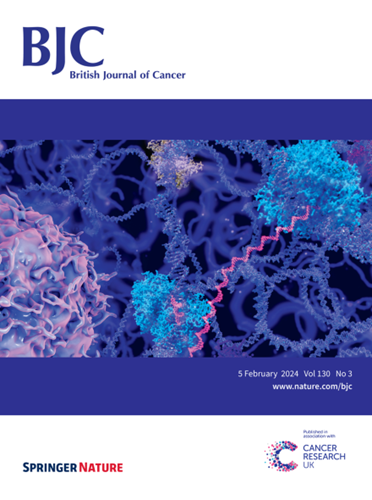Phenotypical differences of neutrophils patrolling tumour-draining lymph nodes in head and neck cancer
IF 6.4
1区 医学
Q1 ONCOLOGY
引用次数: 0
Abstract
The complexity and heterogeneity of neutrophils are recognized, especially their roles in modulating inflammation and cancer immune responses. The detailed functions of neutrophils in human tumour-draining lymph nodes (TDLNs), specifically in the context of head and neck cancer, remain inadequately characterized. This study aims to delineate the phenotypic diversity of neutrophils in TDLNs, non-tumour-draining lymph nodes (nTDLNs) from patients with oral squamous cell carcinoma (OSCC), and to evaluate their correlation with clinical outcomes. A flow cytometry-based investigation. Neutrophils manifest a tissue-specific heterogeneity with significant phenotypic differences between compartments. A substantial fraction of neutrophils displayed an activated CD16highCD62Ldim profile in TDLNs, more prominent in patients with advanced T stages, implicating their involvement in the disease’s progression. Notably, the presence of this activated neutrophil phenotype in TDLNs was strongly associated with poorer patient prognosis. The study confirms the heterogeneity of neutrophils in human TDLNs, aligning with findings from animal models but extending them to show clinical relevance in human disease. The correlation of neutrophil phenotypes with cancer progression and prognosis emphasizes the importance of these cells in the tumour-microenvironment. The data suggests a future possibility to develop targeted therapies that modulate the neutrophilic response in OSCC.

头颈癌肿瘤引流淋巴结中性粒细胞的表型差异。
背景:人们认识到中性粒细胞的复杂性和异质性,尤其是它们在调节炎症和癌症免疫反应中的作用。目的:本研究旨在描述口腔鳞状细胞癌(OSCC)患者的肿瘤引流淋巴结(TDLNs)和非肿瘤引流淋巴结(nTDLNs)中性粒细胞的表型多样性,并评估它们与临床结果的相关性:结果:中性粒细胞表现出组织特异性:结果:中性粒细胞表现出组织特异性异质性,不同分区之间存在显著的表型差异。在TDLNs中,相当一部分中性粒细胞显示出活化的CD16highCD62Ldim特征,在T期晚期患者中更为突出,这表明它们参与了疾病的进展。值得注意的是,TDLNs中出现这种活化的中性粒细胞表型与患者较差的预后密切相关:这项研究证实了人TDLNs中中性粒细胞的异质性,与动物模型的研究结果一致,但将其扩展到人类疾病的临床相关性。中性粒细胞表型与癌症进展和预后的相关性强调了这些细胞在肿瘤微环境中的重要性。这些数据表明,未来有可能开发出调节OSCC中性粒细胞反应的靶向疗法。
本文章由计算机程序翻译,如有差异,请以英文原文为准。
求助全文
约1分钟内获得全文
求助全文
来源期刊

British Journal of Cancer
医学-肿瘤学
CiteScore
15.10
自引率
1.10%
发文量
383
审稿时长
6 months
期刊介绍:
The British Journal of Cancer is one of the most-cited general cancer journals, publishing significant advances in translational and clinical cancer research.It also publishes high-quality reviews and thought-provoking comment on all aspects of cancer prevention,diagnosis and treatment.
 求助内容:
求助内容: 应助结果提醒方式:
应助结果提醒方式:


